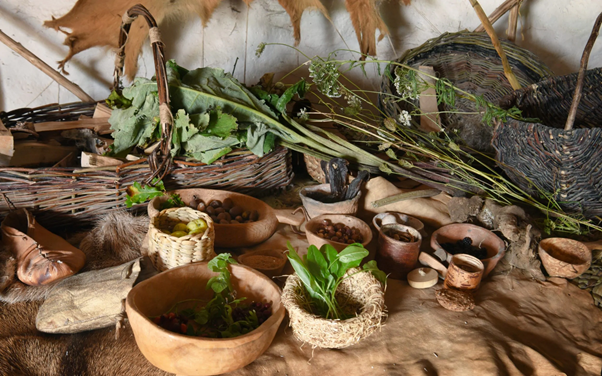 The beginning of the Neolithic represents one of the most significant changes in human economy and lifestyle in history, and yet there is no real certainty about how it came about.
The beginning of the Neolithic represents one of the most significant changes in human economy and lifestyle in history, and yet there is no real certainty about how it came about.
Traditionally, it has been stated that agriculture was discovered in an area of the eastern Mediterranean known as the fertile crescent. From this cradle of civilization, it spread out, as my German Prehistory lecturer described it, “like a panzer advance.”
For a long time, this model of more evolved humans passing on the benefits of farming to primitive hunting and gatherers was very popular. The fertile crescent just happened to be where Europeans had traditionally placed the centre of the world and it followed the Evolutionist agenda of defining some peoples as superior “Kulturvolker” (civilised peoples) and others as inferior “Naturvolker” (primitive peoples). As you might guess, it was a particularly popular theory in 1930s Germany.
Since the war, attitudes to genetically superior or inferior humans have started to change. With this change in attitudes came a change in thinking about how societies change and develop. This coincided with an improvement in archaeological techniques and a famous revolutionary discovery; Carbon Dating.
The effect of being able to accurately date European prehistoric sites was huge. Assertions that the knowledge to grow crops or build great structures must have come from the classical civilisations of Egypt, Greece and Rome were swept away by the incontrovertible fact that the agriculture and monuments of Britain predated these “Great Civilisations.”
So what happened?
Roughly six thousand years ago the culture of the people of Lincolnshire had visibly changed through the adoption of something called the Neolithic package. This package included the following things that could be found in the archaeological record. Sedentary settlement (living in one fixed place), agriculture (growing crops, particularly grain), domestication of livestock and the adoption of pottery and polished stone tools.
These things together demonstrated the change from Mesolithic hunter-gatherers to Neolithic farmers.
But observing that change still raises two difficult questions; how? and why?
Since we are no longer looking over our shoulders at the classical world to answer the question of ‘how?’, we are starting to look at sites that existed during both periods in an attempt to understand what happened. In Europe, there are large, well-investigated sites such as Lapenski Vir which show sedentary living before agriculture, based on fishing and livestock herding. In Britain, we talk about Starr Carr in Yorkshire. The site there was occupied for well over a century and showed that a subsistence living could be made in the hinterland of the settlement without a transitory lifestyle.
These sites and others like them suggest that agriculture and domestication was based more on the management of local resources and less on the discovery of an edible grass. This is supported by the fact that in other parts of the world, other wild plants were selected instead of wheat. This was not because the grasses that wheat comes from were not available, but they were not as well suited to the environment.
And this brings us to why. For the vast majority of human existence, life has been about subsistence. Humans will gain as much food as possible with the least expenditure of effort. This often leads to a belief that farming is naturally the most efficient way of subsisting, but this is not strictly true. For many thousands of years, farming has been supplemented by hunting, and hunting rights have been as jealously guarded as the land itself. It is only recently that farming has become the basis of large surpluses of food.
So what happened in the Neolithic that made humans change?
Well, several things had been going on for some time. Human populations were growing, and this caused greater competition for hunting opportunities. The amount of prey was decreasing with the Holocene mass extinction and the climate was changing. Under these circumstances, the change from making an artificial clearing to encourage animals to come to you, and keeping animals in a corral, which is an artificial clearing with a fence around it, is quite small. Selecting certain plants because they are good to eat, and throwing spare seeds into the ground around the settlement so you don’t have to walk so far, is also a minor change.
So in Lincolnshire, six thousand years ago, people began moving less and controlling the resources around them to save effort. Finding that you are sitting on top of an easy to work resource like clay was in some ways the icing on the cake. But why walk all the way to the river to get reeds to make a basket when you can just make your basket out of mud and bake it?
